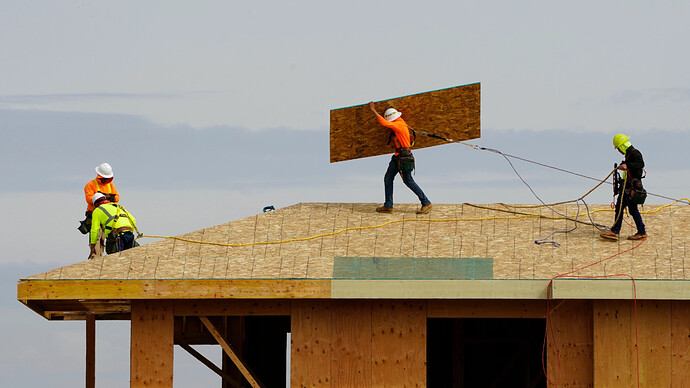Future cities composed of fire-resistant, high-tech wooden buildings could help counter the climate impacts of the coming urbanization boom, a new paper suggests.
The study in Nature Communications builds on a growing architectural and engineering movement that sees wood as not only a more sustainable building material than concrete and steel — but in many ways a superior one.
Half of the world population currently lives in towns and cities, a number that is expected to increase to 85 percent by 2100.
Housing those people in 20th century style mid-rises would mean a staggering hike in carbon emissions as it will lead to huge increases in the production of concrete and steel — whose production is already the source of large amounts of greenhouse gasses.
“But we have an alternative: we can house the new urban population in mid-rise buildings — that is four to ten stories — made out of wood,” Abhijeet Mishra of the Potsdam Institute for Climate Research said in a statement.
Like all wood products, the “engineered wood” in question — found in “mass timber” products such as glulam and cross-laminated timber — would store carbon, rather than emitting it.
But beyond this similarity, the technology bears little relationship to the posts and plywood used in traditional wood construction for single family homes.
In cross-laminated timber, layers of wood are glued together in alternating perpendicular layers in a manner akin to a highly-compressed Jenga set. That creates an extremely strong — but relatively lightweight — composite that can be used for the manufacturer of high-rises.
The International Building Code, the standard for many U.S. cities, in 2021 authorized architects to build all-timber buildings as high as 18 stories without any kind of variance or special permitting, according to trade journal Woodworks.
Some are even higher: The Ascent residential high-rise in Milwaukee opened this summer at 25-stories and 282 feet tall. That building has a reinforced concrete core — but the nearest runner up, the 280-foot tall Mjøstårnet in Norway, is all-wood.
On the shorter side, the five-story PAE Living Building in Portland, Ore., measures 58,000 square feet, generates its own power and reclaimed water, and is designed to last for 500 years, tech news site New Atlas reported.
As an added benefit, such products — which require the kind of small, easily-combustible trees that have little use in markets and help turn small fires into enormous ones — could help create lucrative markets that could finance the costly work of fireproofing forests, Reuters reported.
They also help head off fires inside buildings — while light-frame wood apartment complexes burn easily, engineered timber chars when exposed to flame but does not combust.
In one video of a test by the U.S. Forest Service’s Forest Products Lab, a fire set in a model two-story mass-timber apartment did damage but failed to get purchase — allowing it to be easily put out by the apartment’s sprinklers without the aid of firefighters.
Wood offers additional advantages for architects and environmental designers. Unlike traditional building materials, it tends not to release dangerous chemicals like formaldehyde — potentially leading to better indoor air quality, Reuters reported.
Then there are the more subtle impacts.
“It has biophilic qualities — warmth to touch, the visual texture and fresh smell — that makes it more welcoming and a more pleasant space to live and work as opposed to exposed steel or concrete or white painted drywall,” architect Tom Chung told finance trade magazine Banker and Tradesman.
The relative lightweight of mass timber also allows a kind of construction — defined by huge windows and lots of light — that makes some buildings appear to soar, as in a new terminal at the Zurich airport, Architectural Digest reported.
There’s a catch, the Potsdam team noted: producing the timber necessary for these future wooden cities could come at the expense of forests — which would negate some of the climate benefits.
It could also mean converting farmland to timber plantations, cutting into the land area needed to grow food for those added billions.
Using that land “to grow trees could potentially cause competition for the limited land resources,” coauthor Florian Humpenöder said.
But the scientists found that they could make up most of the 345 million acres needed by sourcing wood from forestland already cleared for timber.
This isn’t a perfect solution, they acknowledge.
“The explicit safeguarding of protected areas is key, but still, the establishment of timber plantations at the cost of other non-protected natural areas could thereby further increase a future loss of biodiversity,” Alexander Popp of Potsdam said in a statement.
That means this system only provides benefits in tandem with “strong governance and careful planning,” Mishra said.
Written by Saul Elbein
Original article
